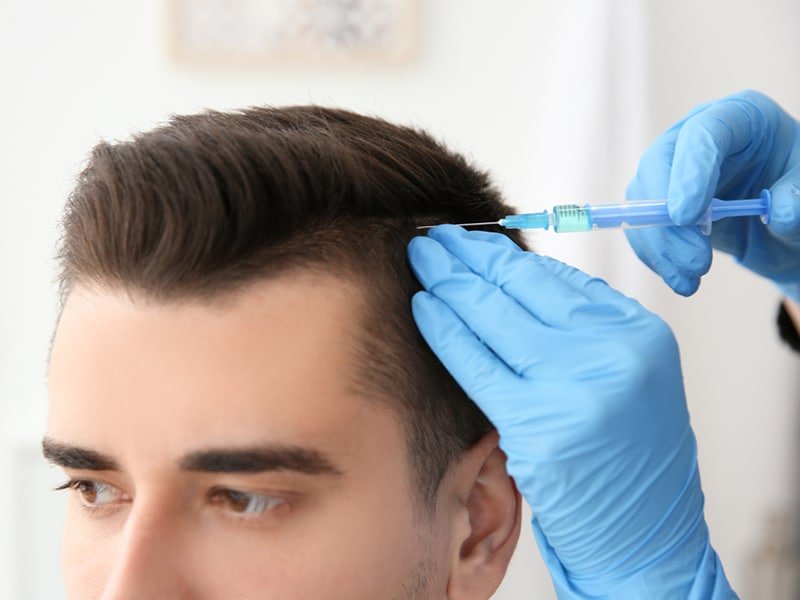Hair loss can start as early as your 20s, but for many men, it becomes more noticeable and emotionally taxing in their 30s. This is a decade where career, dating, and self-image often take center stage—and a receding hairline or thinning crown can feel like it’s working against you.
Hair transplant surgery is a permanent solution that’s growing in popularity, but is it really worth it for men in their 30s? Let’s break down the benefits, risks, ideal timing, and what you should consider before committing to this life-changing procedure.
👨🦲 Why Hair Loss in Your 30s Hits Hard
By age 35, two-thirds of men experience some degree of hair loss, usually in the form of:
- A receding hairline (temples)
- Thinning at the crown
- Widening part or diffuse thinning
For many men, this is the first time hair loss becomes noticeable to others, leading to anxiety, lowered self-confidence, and premature aging.
🧠 Is Your 30s the Right Time for a Hair Transplant?
The short answer: It depends on the progression and stability of your hair loss.
✅ Reasons Why the 30s Are a Great Time for a Hair Transplant:
- Hair loss pattern is becoming clearer (often more predictable than in your 20s)
- Stable donor area: Sides and back of the scalp still contain strong, viable follicles
- Healthier recovery: Younger men generally heal faster and more completely
- Long-term benefits: You enjoy results for decades ahead, improving personal and professional confidence
❌ Caution: Too Early Can Be a Problem
If your hair loss is still rapidly progressing, and you undergo a transplant too early:
- The newly transplanted hair may stay while your native hair continues to fall out
- This can result in an unnatural look or need for additional surgeries
- Doctors may have to “chase” hair loss with repeated sessions
🧪 Am I a Good Candidate in My 30s?
You may be ready for a hair transplant if:
- Your hair loss has stabilized (minimal change over the past 1–2 years)
- You have enough donor hair at the back/sides of the scalp
- You’re healthy and free of conditions that impair healing
- You have realistic expectations (you may not get your teenage hairline back, but you can achieve significant improvement)
If your hair loss is aggressive and ongoing, your surgeon may recommend:
- Delaying surgery
- Starting or continuing medical therapy like finasteride and minoxidil
- Reassessing in 6–12 months
🔍 FUE vs. FUT for Men in Their 30s
| Method | Best For | Pros | Considerations |
|---|---|---|---|
| FUE (Follicular Unit Extraction) | Most men under 40 | No linear scar, faster recovery | May be more expensive, fewer grafts per session |
| FUT (Follicular Unit Transplantation) | Men with extensive loss | More grafts in one session | Linear scar, longer recovery |
💰 Cost vs. Value: Is It “Worth It”?
Hair transplant surgery isn’t cheap—but for many men, it’s one of the best long-term investments in self-confidence and appearance.
💵 Average Hair Transplant Cost in 2025:
- FUE: $6,000–$15,000
- FUT: $4,000–$10,000
But compare that to:
- Years of buying temporary solutions (topicals, concealers, wigs)
- Ongoing costs of medical therapy (finasteride, minoxidil)
- The psychological burden of hair loss
Men in their 30s often find greater value in hair restoration because they:
- Enjoy the results longer
- Feel more confident in relationships and professional settings
- Have a higher chance of great results due to better healing and hair quality
📆 What Results Can You Expect?
| Timeline | What Happens |
|---|---|
| Week 1–2 | Scabs and redness fade |
| Month 1–3 | “Shock loss” phase (transplanted hairs shed) |
| Month 4–6 | New growth begins |
| Month 6–9 | Noticeable thickening |
| Month 9–12 | Final results fully visible |
🧴 Pairing Transplant with Medical Therapy
Even in your 30s, you’ll likely need to use supportive treatments like:
- Finasteride (Propecia): Blocks DHT to prevent further loss
- Minoxidil (Rogaine): Stimulates growth of miniaturized follicles
- PRP Therapy: Uses your own plasma to nourish and rejuvenate follicles
Why? Because a transplant doesn’t stop future hair loss—it only restores what’s already gone. Medical therapy helps preserve the rest.
✅ Pros of Hair Transplant in Your 30s
- Long-term, natural-looking results
- Restores youthful appearance and confidence
- Minimal maintenance after healing
- Boosts mental health and self-esteem
- High success rate when performed by experienced surgeons
❌ Cons to Consider
- Requires downtime (7–14 days recovery)
- Results take 6–12 months to fully show
- May require a second session later in life
- Not all men are ideal candidates
- Costly upfront investment
👨⚕️ Real Talk: What Top Hair Surgeons Say
“The ideal hair transplant candidate is often in their 30s because their hair loss is more predictable, yet they still have good donor reserves and youthful skin.”
— Dr. John Doe, Board-Certified Hair Restoration Surgeon
“The key is not age—it’s stability of hair loss and realistic expectations. Many of our happiest patients are in their early to mid-30s.”
— Dr. Jane Smith, IAHRS Member
🧠 Final Verdict: Is It Worth It?
For many men in their 30s, a hair transplant is absolutely worth it—provided you:
- Choose a reputable, experienced surgeon
- Have a stable pattern of hair loss
- Understand that it’s a long-term commitment
- Are open to combining surgery with preventive treatments
With proper planning, you can restore your hairline, confidence, and youthful appearance—and enjoy the benefits for decades to come.
💬 Ready to Take the Next Step?
Book a consultation with a board-certified hair transplant surgeon to determine your candidacy. It’s the first step toward reclaiming your hair—and your confidence.




